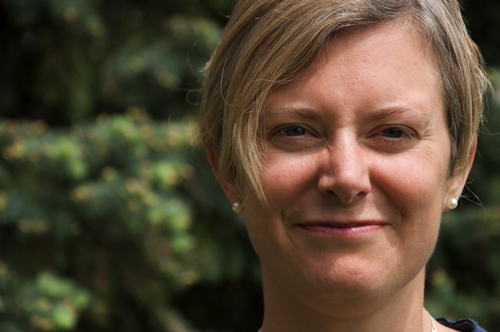
For many people, a plateful of food can be more worrying than appetizing. Are there pesticides on the vegetables? Too much fat in the sauce? Too little fibre? We worry that eating the wrong things might kill us ─ and hope that eating the right things will give us a long and healthy life.
History professor Catherine Carstairs says that questioning the health aspects of our diet has been increasingly common since the 1970s, but the roots of these concerns go back at least a few more decades. She’s recently been awarded a Fulbright Scholar grant to travel to the University of California’s (UC) Davis campus, where she’ll explore the lives of two American writers who made the idea of “health food” popular in the mid-1900s.
The first of these writers, Gaylord Hauser, published his best-known book Look Younger, Live Longer in 1950. The book was serialized by Reader’s Digest and translated into a dozen languages.
“Hauser’s book was aimed at women in what he called ‘the second half of life’ and was all about how to keep your beauty after you turned 40,” explains Carstairs. “Much of his advice was sensible nutrition ─ eating salads, fruits and vegetables ─ and he also promoted lying every day on a yoga slant board, so the blood would rush to your head and rejuvenate your skin, and daily stomach lifts.” The message was that you could live a productive and beautiful life as long as you followed Hauser’s instructions.
Hauser was often shown in photos at his villa in Sicily or chatting with his celebrity clients, and Carstairs says it was glamour as much as good nutrition that his books promoted. “By the 1950s, people were living longer and starting to think about retirement as a time for leisure. They were looking for guidance and tools. Hauser offered this tremendously optimistic vision.” But while he enjoyed considerable fame during the 1950s, Hauser’s influence has “faded away,” Carstairs says. “He doesn’t get much attention in health food circles today.”
The second author Carstairs is studying actually published her books around the same time, but didn’t become widely-known until the books were reissued in paperback in the late 1960s and early 1970s. The author, Adelle Davis, had a much bleaker vision; her books are full of warnings about sub-clinical deficiencies, pesticide-soaked fruits and vegetables and depleted soils in farmers’ fields. “She sold fear,” says Carstairs.
Davis was much stricter than Hauser and recommended taking many supplements.
“I’m interested in understanding her background,” says Carstairs. “She was trained as a home economist during the years when vitamins were first discovered, and I think her heavy use of vitamin supplements comes from that. Domestic science was also trying to bring science to the kitchen at this time in history, and so Davis couches much of her work in scientific language. Her recipes give very precise instructions.”
Davis remained popular for a longer period of time and is still read today, despite criticisms that the references in her books often did not support her statements. Some doctors claimed that she harmed children’s health with her advice, but Carstairs points out that “in most of these cases, the parents did not actually follow the advice that was given in her book.”
“When Davis died from cancer, there were some negative things in the media,” says Carstairs. “It seemed a bit extreme to me that they used her cancer against her. On the other hand, she had left herself open for that kind of criticism when she said that if you drank a quart of milk a day, you’d never get cancer.”
Carstairs sees a strong conservative element in the writings of both of these authors. “Health food is often seen as a left-wing thing, but it didn’t actually just spring up in the sixties. These writers, and others like them, provided the roots that grew into the movement. The conservative philosophy behind this is about taking personal responsibility for your health. There is the suggestion that anyone can eat properly, if you just make the effort ─ a suggestion that ignored the societal restraints of poverty,” she says.
While in California, Carstairs hopes to connect with other UC faculty at the Interdisciplinary Institute of the Humanities where her office will be located. “They bring in scholars from all over the world and provide lots of speakers and activities,” she says. “I will also give at least one talk while I’m there.”
Carstairs leaves in January and will return to Guelph in May. “That’s another benefit of this award ─ being in California during the winter,” she says.